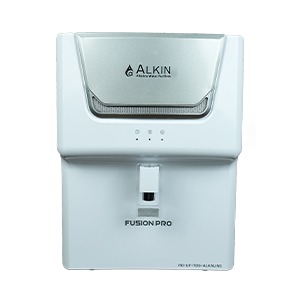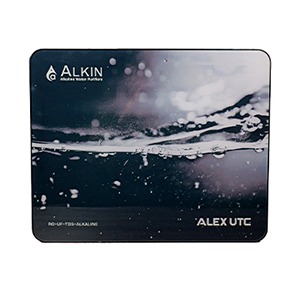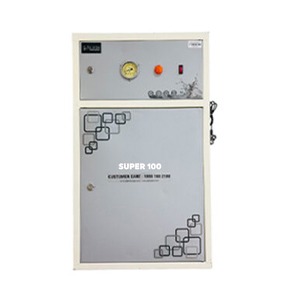- About us
- Alkaline Water Purifiers
- Commercial Water Purifiers
- Water Ionizer
- Water Softeners
- Inbuilt Dispensers
- Industrial
- Blog
- The Difference Between Alkaline Water Purifiers and Alkaline Water Ionizers
- Best Water Softener for Hard Water
- Alkaline Water Benefits
- Alkaline Water Purifier for Home
- Best Water Softener for Bathroom
- Automatic Water Softener for Home
- Difference Between RO Purifier and Alkaline Water Ionizer
- Hydrogen’s Hidden Power – Alkin Tech Transforms Water Into Energy
- Hydrogen Water Machines – Enhanced Drinking Water
- Insights into Alkin Water Ionizers: Creative Solutions for a Healthier Lifestyle
- Benefits of Hydrogen Water: Why Alkin Water is Your Best Choice
- alkin water softener worth it benefits costs alternatives
- Alkaline Water vs Regular Water: understanding the pH Hype
- How to Pick the Best Alkin Water Ionizer for Your Home
- The Ultimate Guide to Choosing the Best Water Softener for Home Use
- Hydrogen Water in 2025: Is It a Scam or Science for Indians?
- Is Your Water Acidic? Uncover the Benefits of Alkaline Water
- Policies
- Contact Us
💧 Smart Water Purifiers in 2026: Are They Worth the Hype?
Water purification has come a long way. From simple gravity filters and stone sieves to reverse osmosis (RO) and ultraviolet (UV) treatments — these technologies have shaped how we get safe drinking water. But now, “smart water purifiers” are entering center-stage. With IoT, real-time monitoring, AI, sensor networks, voice control, app alerts — there’s a lot of buzz. But are they really worth the extra cost? What are the trade-offs? And what should you (as a buyer) look for in 2026?
What Makes a Water Purifier “Smart”?
“Smart” means more than just filtering water. It implies added intelligence, connectivity, automation, and user feedback. Here are the main features typically involved:
| Feature | What It Does |
|---|---|
| Sensors (TDS, pH, turbidity, flow, pressure) | Monitor input/output water quality; detect when filters are worn or water is bad. |
| Real-Time Monitoring & Alerts | Push notifications (via app or other) when filters need changing, maintenance required, or if water quality drops. |
| Connectivity | WiFi / Bluetooth / app control; sometimes voice assistant compatibility. Enables remote check, setting preferences, even automating responses to water quality. |
| Adaptive Filtration/Operation | The purifier adjusts itself based on incoming water conditions — for example, deciding whether to use RO vs UV or less intensive filtration based on TDS or contaminants. Also to save energy or waste water. |
| Self-Cleaning / Hygiene Features | Automatic sterilization (UV/LED), cleaning of internal parts, preventing bacterial growth, keeping tanks clean. |
| Mineral & Taste Optimization | Post-filtration mineralization (adding calcium, magnesium, copper etc.), preserving essential minerals, adjusting pH, improving taste. |
| Energy / Resource Efficiency | Reducing electricity usage, minimizing water wastage (e.g. high recovery RO, using RO only when needed), optimizing filter lifespan. |
What’s New / Evolving in 2026
- Better Sensors & Analytics: More precise detection of a wider range of contaminants — microplastics, pharmaceuticals, chemical residues. Sensors can now predict upcoming degradation of filters or membranes. AI may adapt purification stages based on water source and its changing quality over seasons.
- Adaptive / Modular Purification: Purifiers that don’t always use RO (which wastes water and removes minerals) unless needed. If incoming water is clean (low TDS / safe microbial quality), it may bypass heavy RO and rely on milder filtration like UV, UF, carbon filters. This reduces waste and preserves healthy minerals. Example: Atomberg Intellon’s adaptive flow mode.
- Sustainability Focus: Minimizing water waste, energy usage, using eco-friendly materials, recyclable filters, longer filter life. Some models use solar or low power standby modes.
- Enhanced UX / Convenience: Interfaces are improving: apps with dashboards showing water quality history, filter health, usage statistics. Voice control (Alexa, Google), hands-free features. Scheduled maintenance, even remote diagnostics by brands.
- Integration with Smart Home & Utility Systems: Purifiers becoming part of the IoT ecosystem: connected to home water management, municipal alerts (e.g. when water supply quality drops), auto-orders for replacement filters, linking with water usage monitoring (especially in apartments / societies).
So the smart purifier of 2026 is more aware, more adaptive, more efficient than older models.
Advantages of Alkin Smart Purifiers: What You Gain
- Better Water Safety & Health: Early detection of contamination or filter failure helps avoid drinking unsafe water. Ensures microbial safety, heavy metal removal, etc., by maintaining optimal performance. Mineral retention / taste enhancement (important for alkaline or mineral-rich water) improves health AND user satisfaction.
- Convenience & Peace of Mind: App notifications when filter needs replacement or maintenance is due. No guesswork. Remote monitoring so you can check water quality without opening up the purifier or calling technician. Self-cleaning features reduce manual cleaning and bacterial growth issues.
- Resource Efficiency: Less water wasted (adaptive RO usage, high recovery rates). Energy savings through optimized operation. Longer filter and membrane lifespans reducing replacement costs and waste.
- Long-Term Cost Savings: Although the upfront cost is higher, smart purifiers can save money over time via fewer filter changes, less water pumping/processing, less labor/servicing, and potentially lower electricity bills.
- Improved Taste & Mineral Balance: Things like mineral boosters, pH control, better design to avoid stagnation etc., help water taste better and retain health-helpful minerals. Users often prefer water that tastes good and feels “fresh” rather than “flat” or overly stripped.
- Better Transparency & Trust: When your purifier shows real-time data, users feel more confident. This helps brands too — fewer complaints, better satisfaction.
Challenges / Trade-Offs: What to Watch Out For
| Challenge | What It Means in Practice |
|---|---|
| Higher Initial Cost | Smart models are more expensive than basic ones. Sensors, electronics, app, connectivity raise manufacturing costs. Upfront investment is more. |
| Maintenance Complexity | More components = more potential failure points (sensors, smart ICs, connectivity modules). Repairs may require specialist service. Replacement parts may be costlier. |
| Dependency on Connectivity / Power | Features like remote alerts, cloud dashboards etc. require internet + stable power. In power or internet outages, some “smart” aspects may be unusable. |
| Sensor Calibration & Accuracy | Cheap sensors may drift over time, give false readings. Poor calibration or maintenance can cause problems. If users don’t monitor properly, they may misuse or ignore alerts. |
| Hidden Costs | Replacement filters, specialized parts, subscription fees (if the brand uses recurring payments or cloud services), possibly more electricity usage for features. |
| Water & Mineral Loss | Although adaptive RO helps, many purifiers still waste water and may remove beneficial minerals if not designed properly. Users must pay attention to what is retained/added. |
| Durability & After-Sales Support | Because components are more advanced, robustness across harsh water conditions (high TDS, fluctuating supply, poor power) is challenging. After-sales, warranties, and spare availability become more critical. |
Cost vs Value: Is It Worth It?
To decide if a smart water purifier is “worth it,” you should do a cost-benefit calculation specific to your water situation, usage pattern, and expectations. Here’s how you can think about it:
Key Variables to Consider
- Quality of Input Water: If your water already has moderate TDS, low microbial contamination, stable supply, then you may not need a high-end smart purifier.
- Water Usage / Household Size: Larger households benefit more from features like large storage, high flow rates, better recovery, etc. Single person / couple homes might get away with simpler models.
- Cost of Electricity / Water: In regions where electricity or water is expensive, smart features that save energy or reduce water waste have bigger returns.
- Maintenance Costs & Spare Parts: How often must filters be replaced, cost of sensors, servicing. Brands that provide cheap, available spares make smart purifiers more cost-effective.
- Lifestyle & Convenience Preferences: If you value remote monitoring, alerts, hands-free operation and data tracking, then paying extra for smart features might be worthwhile. If you are okay checking things manually, simpler might suffice.
- Long-Term Durability & Brand Support: Good warranty, service network, spare parts are critical. A cheaper purifier with poor support can cost more in the long run.
Example “Back-of-Envelope” Comparison
| Cost Type | Basic Purifier (3-5-yr lifetime) | Smart Purifier |
|---|---|---|
| Upfront Price | Lower (let’s assume ₹8,000 to ₹15,000) | Higher (₹20,000 to ₹40,000 or more depending on features) |
| Water Wastage | Standard RO waste, no adaptive bypass etc. Might waste more water. | Adaptive RO, intelligent bypass, better recovery pumps reduce waste → saving on your water bills / wastage cost. |
| Filter / Replacement Parts | Regular RO membrane, UV lamp etc. Filters replaced on schedule manually. | Similar parts + sensors, possibly more expensive spares; but some smart purifiers have longer filter lifespans or less frequent maintenance due to auto-alerts. |
| Electricity Use | Runs fixed filtration settings; possibly less idle power draw. | Might consume slightly more power for sensors, connectivity, monitoring, but gains from optimized filtration can offset some of that. |
| User Effort & Quality Assurance | More manual (you check filters, notice signs). Risk of degraded performance if you ignore maintenance. | You get alerts, remote monitoring → likely better maintained → more consistent water quality. |
| Resale / Longevity | Basic models may become obsolete sooner. | Smart models may stay relevant longer; updates, newer features might get added. |
If the smart purifier reduces water waste by 20-30%, ensures you don’t drink unsafe water due to neglected maintenance, and you value convenience, over 5 years you may save money (or at least get sufficient value) vs paying for the “smart premium.” If not, the premium might just be for features you don’t use.
What to Check Before You Buy a Smart Purifier (2026 Edition)
- Know Your Water Source & Quality: Get your water tested: TDS, mineral content, microbial load, chemicals (fluoride, lead etc.). That tells you which filtration stages are needed and whether smart features like adaptive RO are useful.
- Filter / Membrane Life & Cost: Ask: how often filters need replacement, how expensive are them, whether there are generic / aftermarket spares or only branded ones.
- Waste Water / Water Recovery Rate: Smart purifiers that adjust RO usage or bypass RO when possible help reduce wastage. Look for high recovery rates. Also check whether waste water has reuse options (for gardening, cleaning etc.).
- Power & Connectivity Requirements: Will the app / remote monitoring work reliably in your region? Is WiFi stable? Do you often have power cuts? Is there a battery backup? What happens when connectivity fails (i.e. will it stop working or revert to manual mode)?
- Sensor Accuracy & Calibration: Are the sensors trustworthy? Is there data / lab certification? Does the purifier allow recalibration? Are there physical displays in addition to app readings?
- Safety & Hygiene Features: UV sterilization, auto clean, stainless steel tanks, protection against secondary contamination. Hygiene is more than filtration – how water is stored and transported matters.
- User Interface & Feedback: Good apps with clear dashboards, alerts, history; voice control if needed; visible indicators on the purifier itself. These help you monitor and trust the system.
- After-sales Support & Warranty: Smart features are only as good as the support behind them: service centres, replacement parts, software updates if the product uses firmware, sensor replacements etc.
- Realistic Price vs Features Ratio: Don’t pay excessively for premium “smart branding” if many features are unused. Brands that deliver essential smart features well tend to offer better value than those which offer a long feature-list without reliability.
Tips to Maximise Value if You Buy Alkin Smart Purifier
- Use the monitoring features — don’t ignore alerts. Replace filters as recommended, not later.
- Record baseline water quality — know your area’s seasonal changes. Helps in evaluating whether adaptive filtration is working.
- Reuse waste water wherever possible — for plants, cleaning etc., especially if RO reject water is high.
- Maintain hygiene — clean tanks, use auto-sterilization, etc.
- Check firmware/software updates if applicable. Brands that update their sensors / apps may fix bugs, improve features.
- Compare total cost of ownership (TCO) — upfront cost + filter/spare parts + electricity + water loss over 5 years. Don’t just compare retail price.
Verdict
In 2026, smart water purifiers are more mature, more capable, and more aligned with what modern households expect. Many of the features that seemed luxury before are now entering mainstream models. For people who care about health, safety, convenience, sustainability, and long-term savings — the investment often pays off.
However, “smart” doesn’t always equal “better” in every situation. It depends heavily on your water quality, usage, budget, and how much you actually use those smart features. The smartest purifier is the one whose features you actually need, use, and maintain reliably.
Final Thoughts
If you’re considering buying a smart water purifier in 2026, don’t be swayed just by flashy features. Do your homework: test your water, know your household’s usage, check surroundings (power, internet, service), compare brands’ reputations. If done right, a smart purifier can deliver cleaner water, less waste, fewer worries, and better health. And yes — for many people, the hype around smart water purifiers is justified.
👉 To know more about smart purifiers
🔗 Visit: https://alkinwater.co.in/products
Choose Alkin and experience clean water that cares for the Earth as much as it cares for you.










































